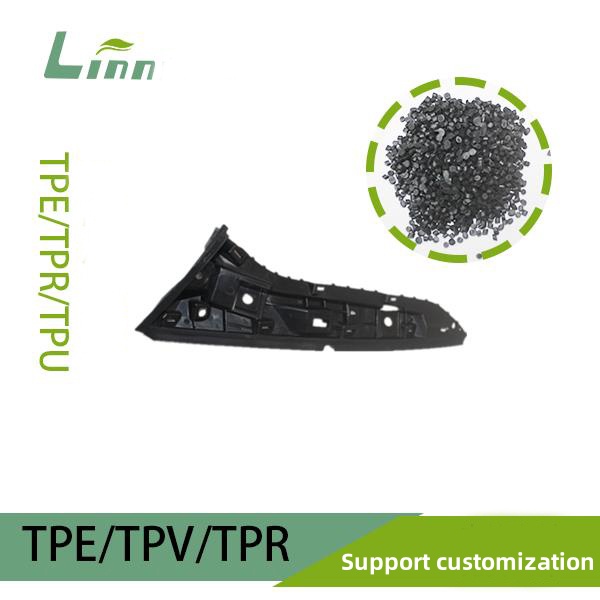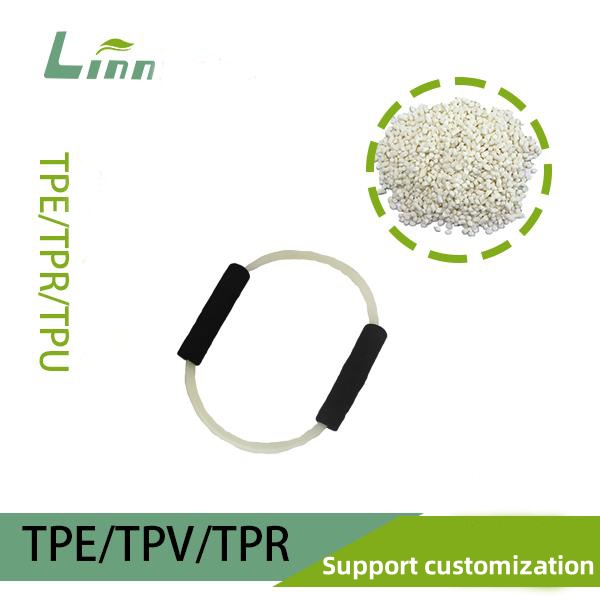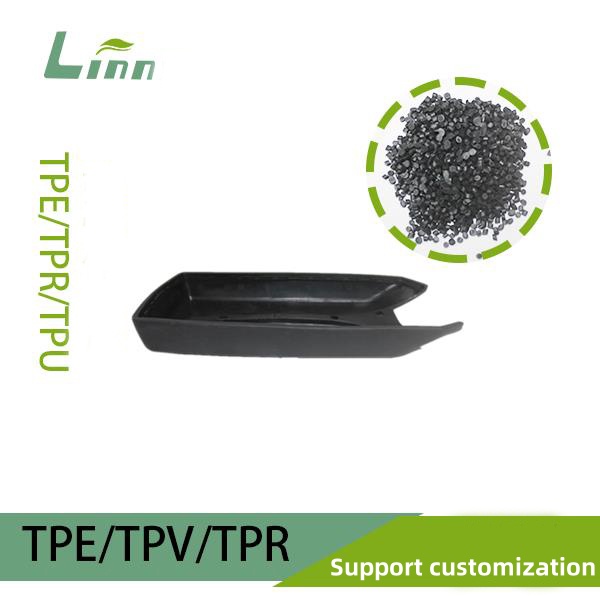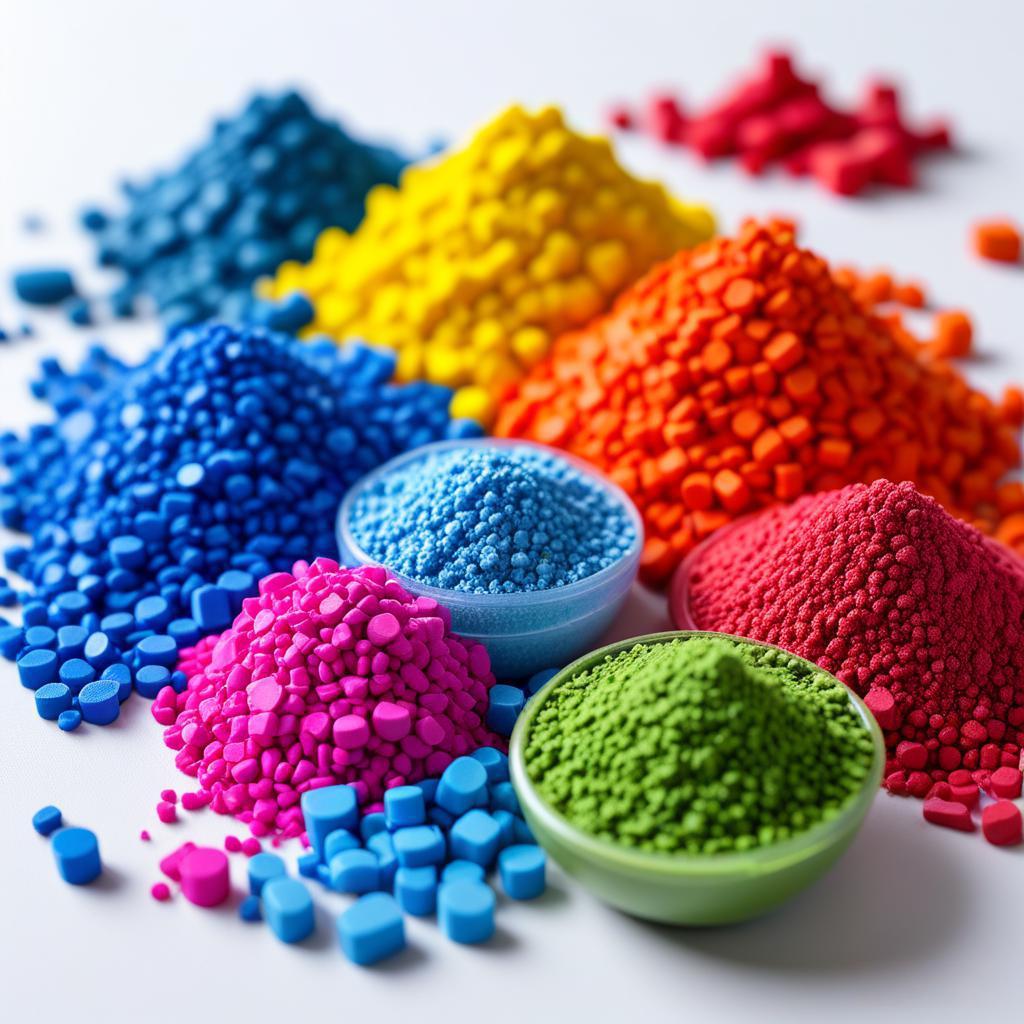Having spent over a decade in the world of TPE (Thermoplastic Elastomer) processing, I’ve seen firsthand how crucial flowability is to getting great results in injection molding, extrusion, or other manufacturing processes. Whether you’re crafting soft-touch grips, flexible seals, or intricate medical devices, the way TPE flows in its molten state can make or break your project. In this article, I’ll walk you through everything you need to know about TPE’s flowability—what it is, what affects it, and how to optimize it for your production needs. My goal is to share practical insights from my experience so you can tackle any flow-related challenges with confidence.

Understanding TPE Flowability: Why It Matters
Flowability, in simple terms, refers to how easily a molten TPE material moves through a mold, die, or processing equipment. It’s a measure of the material’s ability to fill complex geometries, maintain uniformity, and avoid defects like short shots or surface imperfections. In technical terms, flowability is often tied to the Melt Flow Index (MFI), which quantifies how much material flows under specific temperature and pressure conditions (typically measured in grams per 10 minutes).
Why does this matter? Well, I’ve been in situations where poor flowability led to incomplete parts, while overly high flow caused issues like flash or stringing. Getting the flow just right is like finding the perfect balance in a recipe—it ensures your product looks good, performs well, and gets produced efficiently.
TPE’s flowability varies widely depending on its composition (e.g., SEBS, TPU, or TPV-based), processing conditions, and even the equipment you’re using. Let’s dive into the key factors that influence it and how you can work with them.

What Influences TPE Flowability?
From my years tweaking machines and troubleshooting production lines, I’ve learned that TPE flowability is shaped by a mix of material properties, processing parameters, and equipment setup. Here’s a detailed breakdown:
1. Material Composition
TPEs aren’t a one-size-fits-all material—they come in various types, each with distinct flow characteristics:
SEBS-based TPEs: These are soft and flexible, often used for overmolding. Their flowability tends to be moderate, but it can vary with additives like oils or fillers. I’ve found SEBS TPEs work well for intricate parts when the MFI is balanced (around 5-20 g/10 min).
TPU-based TPEs: Known for durability, TPUs have lower flowability due to higher viscosity, making them trickier for thin-walled parts. I once struggled with a TPU grade that needed higher temperatures to flow properly without degrading.
TPV (Thermoplastic Vulcanizates): These have a cross-linked structure, which reduces flowability compared to SEBS but offers great heat resistance. They’re ideal for automotive seals but require precise temperature control.

Fillers and Additives: Adding fillers like calcium carbonate or glass fibers can reduce flowability by increasing viscosity. On the flip side, plasticizers or flow enhancers can boost it. I’ve worked with clients who tweaked their TPE formula to hit the sweet spot for their molds.
2. Processing Conditions
How you process TPE has a huge impact on its flow. Here’s a quick table summarizing key parameters and their effects:
| Parameter | Impact on Flowability | My Recommendation |
|---|---|---|
| Temperature | Higher temps lower viscosity, improving flow | Set barrel temps between 355-430°F (180-220°C), adjusting per material grade. |
| Injection Pressure | Higher pressure enhances flow into complex molds | Use 1150-1750 psi; stage pressure for delicate parts to avoid flash. |
| Shear Rate | High shear thins TPE, boosting flow | Optimize screw speed (50-100 rpm) to balance shear without degrading the material. |
| Cooling Rate | Fast cooling can limit flow in thick sections | Keep mold temps at 105-140°F (40-60°C) for uniform flow and solidification. |
My Story: Early in my career, I was molding TPE grips and kept getting short shots. I cranked up the temperature, thinking it’d help the material flow better, but it caused degradation instead. After some trial and error, I learned that a slight bump in injection pressure and a lower screw speed did the trick without overheating the material.
3. Mold and Equipment Design
Your mold and machine setup can either enhance or hinder TPE flowability:
Gate Size and Type: Small gates restrict flow, while larger ones allow better filling. For high-flow TPEs, I prefer fan or edge gates to avoid jetting. A project I worked on used a pinpoint gate for a thin TPE part, and switching to a fan gate cut defects by 30%.
Runner System: Hot runners improve flow consistency compared to cold runners, especially for high-MFI TPEs. I’ve seen hot runners save cycle time and reduce waste in high-volume production.

Mold Surface: Polished mold` surfaces let TPE flow more freely, reducing sticking issues. I once dealt with a mold where rough surfaces caused uneven flow—polishing it to a mirror finish made all the difference.
Venting: Poor venting traps air, which restricts flow. Adding vents (0.0004-0.0012 inches wide) has saved me from flow issues more times than I can count.
4. Environmental Factors
Moisture is TPE’s enemy. Wet material flows poorly and can cause defects like bubbles. I always dry TPE at 175-210°F for 2-3 hours to keep moisture below 0.1%. Also, workshop humidity matters—keep it under 50% to avoid absorption during processing.
How to Optimize TPE Flowability for Your Project
Now that we’ve covered what affects flowability, let’s get practical. Here’s how I approach optimizing TPE flow for different applications:
1. Choose the Right TPE Grade
Start by matching the TPE’s MFI to your product’s needs:
Thin-walled parts (e.g., medical tubing): High-MFI TPEs (20-50 g/10 min) flow easily into delicate molds.
Thick parts (e.g., gaskets): Lower-MFI TPEs (5-15 g/10 min) offer better control and less flash.
Overmolding: Mid-range MFI (10-25 g/10 min) balances adhesion and flow.
I once helped a client molding TPE phone cases. Their high-MFI material flowed too fast, causing flash. Switching to a 15 g/10 min grade cleaned things up perfectly.
Pro Tip: Not sure which grade to pick? Linn’s material experts can analyze your mold design and recommend the ideal TPE.

2. Fine-Tune Processing Parameters
Here’s my step-by-step approach to dialing in flow:
Start with Manufacturer Guidelines: Use the TPE supplier’s recommended temperature and pressure settings as a baseline.
Test Incrementally: Adjust one variable at a time (e.g., raise barrel temp by 10°F). Log results to track what works.
Balance Shear and Heat: High screw speeds improve flow but can degrade TPE. I keep speeds moderate (50-80 rpm) to avoid burning the material.
Monitor Cycle Time: If flow is good but cooling takes too long, tweak mold temp or add cooling channels.
Real Example: On a TPE seal project, the material wasn’t filling the mold’s edges. I raised the injection pressure by 200 psi and lowered the barrel temp by 15°F, which let the material flow smoothly without defects.
3. Enhance Mold Design
If flow issues persist, the mold might need tweaking:
Widen Gates: For low-flow TPEs, increase gate size by 0.01-0.02 inches.
Add Flow Leaders: Channels in the mold can guide material to tricky areas. I used this trick on a complex TPE keypad, cutting short shots by 25%.
Optimize Cooling: Uneven cooling stalls flow in thick sections. Ensure water channels cover the mold evenly (water temp: 60-75°F).

4. Pre-Process Material Properly
Never skip drying. I use a dehumidifying dryer to ensure TPE is bone-dry before molding. Also, store materials in sealed containers to avoid moisture pickup.
5. Test and Iterate
Every project is unique, so run small batches to test flowability. I like to mold 10-20 parts, inspect for defects (short shots, flash, etc.), and tweak settings until the results are consistent.
My Lesson Learned: Years ago, I assumed a TPE’s flowability would match its datasheet. Big mistake—the mold’s geometry changed everything. Now, I always test new materials in the actual mold before full production.
Comparing TPE Flowability to Other Materials
To put TPE in context, here’s how its flowability stacks up:
| Material | Typical MFI Range (g/10 min) | Flowability Notes |
|---|---|---|
| TPE | 5-50 | Versatile; flow varies by type (SEBS flows easier than TPU). Great for complex molds. |
| PP | 10-40 | Flows well but less elastic than TPE. Easier for rigid parts. |
| ABS | 5-25 | Moderate flow; stiffer than TPE, less forgiving in thin sections. |
| TPU | 5-20 | Lower flow than SEBS-based TPEs due to higher viscosity. Needs higher temps. |
TPE’s edge is its flexibility—literally and figuratively. Its flowability can be tuned for both soft and semi-rigid parts, unlike more rigid plastics.
Troubleshooting Flowability Issues
When flow goes wrong, here’s how I diagnose and fix it:
Short Shots (Incomplete Filling): Increase temperature (by 10-20°F), pressure (by 100-300 psi), or gate size. Check for clogged vents.
Flash (Excess Material): Lower MFI grade or reduce pressure/temp. Inspect mold for wear at parting lines.
Burn Marks: High flow with excessive shear can scorch TPE. Lower screw speed or temp.
Bubbles: Usually from moisture. Re-dry material and check venting.
Case Study: I once worked on TPE tubing that kept coming up short. The material’s MFI was fine (25 g/10 min), but the mold’s gates were too narrow. Widening them by 0.015 inches and boosting pressure fixed it without changing the material.

Maintaining Consistent Flow in Production
Once you’ve nailed flowability, keep it steady:
Document Everything: Record parameters (temps, pressures, etc.) in a process sheet. I’ve saved hours by referring to old logs when issues pop up.
Train Operators: Show your team how flow affects quality. I hold monthly workshops to share tricks like spotting short shots early.
Monitor Equipment: Screws and barrels wear out, altering flow. Inspect them quarterly—my team uses ultrasonic testing to catch wear early.
Check Material Batches: Even “identical” TPE lots can vary. Test new batches for MFI consistency.
My Takeaway: Consistency comes from discipline. After a flow issue derailed a big order years back, I started triple-checking settings before every run. No regrets.
Common Questions About TPE Flowability
Here are answers to questions I hear often, based on my experience:
Q1: How do I know if my TPE’s flowability is too high or too low?
A: Too high, and you’ll see flash or stringing. Too low, and you’ll get short shots or uneven surfaces. Check the MFI (datasheet or lab test) and test-mold a few parts to confirm.
Q2: Can I improve flow without changing the TPE?
A: Yes! Raise barrel/mold temps, increase pressure, or optimize gates. For minor tweaks, I’ve added 0.5% flow enhancer to the mix with good results.
Q3: Why does my TPE flow differently in small vs. large molds?
A: Small molds need higher flow (higher MFI) for thin sections. Large molds tolerate lower flow but need balanced cooling to avoid stalls. Adjust parameters to match mold size.
Q4: My parts have bubbles despite good flow. What’s wrong?
A: Bubbles often mean moisture or trapped air. Dry the TPE thoroughly and check mold vents. If it persists, lower screw speed to reduce shear.
Q5: Is TPE flowability affected by colorants?
A: Sometimes. High-pigment loads (e.g., carbon black) can slightly reduce flow by acting as fillers. I stick to low-dose masterbatches to minimize impact.

Wrapping Up
TPE flowability is both an art and a science. It’s about understanding your material, tweaking your process, and designing molds that let the TPE shine. Over the years, I’ve learned that patience pays off—rushing fixes leads to more headaches. Take time to test, document, and refine, and you’ll get parts that look great and perform even better.
If you’re wrestling with flow issues or just want to optimize your setup, Linn’s team is here to help. Drop us a line, and we’ll work through it together. Here’s to smoother molding and happier production days!
